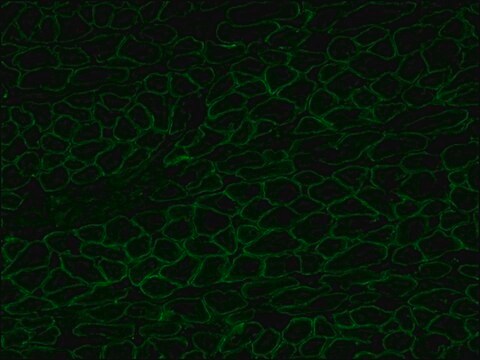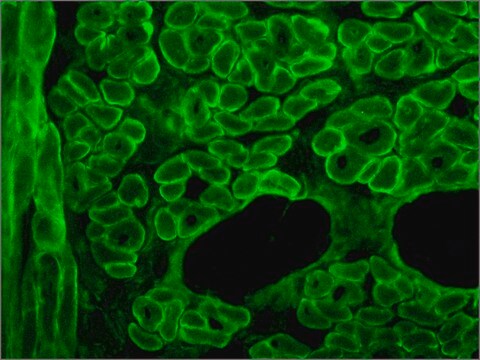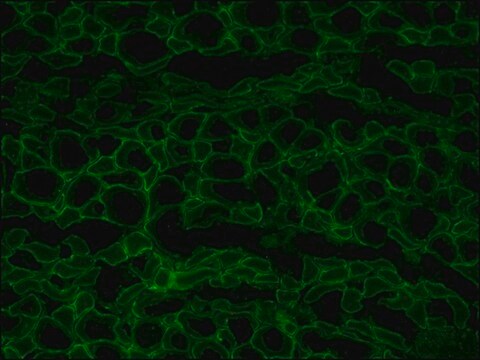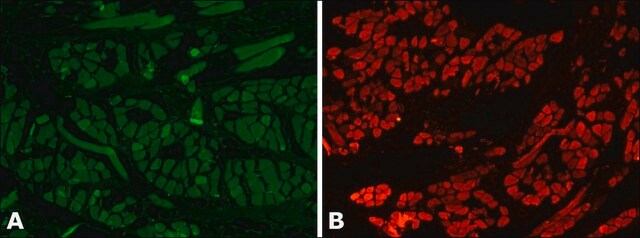MABT827
Anti-Dystrophin Antibody
mouse monoclonal, 2C6 (MANDYS106)
Sinonimo/i:
Dystrophin
About This Item
Prodotti consigliati
Nome del prodotto
Anti-Dystrophin Antibody, clone 2C6 (MANDYS106), clone 2C6 (MANDYS106), from mouse
Origine biologica
mouse
Livello qualitativo
Forma dell’anticorpo
purified antibody
Tipo di anticorpo
primary antibodies
Clone
2C6 (MANDYS106), monoclonal
Reattività contro le specie
human
tecniche
immunofluorescence: suitable
immunohistochemistry: suitable
western blot: suitable
Isotipo
IgG2aκ
N° accesso NCBI
N° accesso UniProt
Condizioni di spedizione
wet ice
modifica post-traduzionali bersaglio
unmodified
Informazioni sul gene
human ... DMD(1756)
Descrizione generale
Specificità
Immunogeno
Applicazioni
Immunofluorescence Analysis: A represenative lot was employed together with a spectrin antibody in dual immunofluorescent sarcolemma staining for assessing dystrophin levels of muscle fiber cells in muscle biopsies from healthy donors and Becker muscular dystrophy (BMD) patients (Beekman, C., et al. (2014). PLoS One. 9(9):e107494).
Cell Structure
Adhesion (CAMs)
Qualità
Immunohistochemistry Analysis: A 1:50 dilution of this antibody detected Dystrophin in human skeletal muscle myocytes.
Descrizione del bersaglio
Stato fisico
Stoccaggio e stabilità
Altre note
Esclusione di responsabilità
Non trovi il prodotto giusto?
Prova il nostro Motore di ricerca dei prodotti.
Raccomandato
Codice della classe di stoccaggio
12 - Non Combustible Liquids
Classe di pericolosità dell'acqua (WGK)
WGK 1
Punto d’infiammabilità (°F)
Not applicable
Punto d’infiammabilità (°C)
Not applicable
Certificati d'analisi (COA)
Cerca il Certificati d'analisi (COA) digitando il numero di lotto/batch corrispondente. I numeri di lotto o di batch sono stampati sull'etichetta dei prodotti dopo la parola ‘Lotto’ o ‘Batch’.
Possiedi già questo prodotto?
I documenti relativi ai prodotti acquistati recentemente sono disponibili nell’Archivio dei documenti.
I clienti hanno visto anche
Il team dei nostri ricercatori vanta grande esperienza in tutte le aree della ricerca quali Life Science, scienza dei materiali, sintesi chimica, cromatografia, discipline analitiche, ecc..
Contatta l'Assistenza Tecnica.








